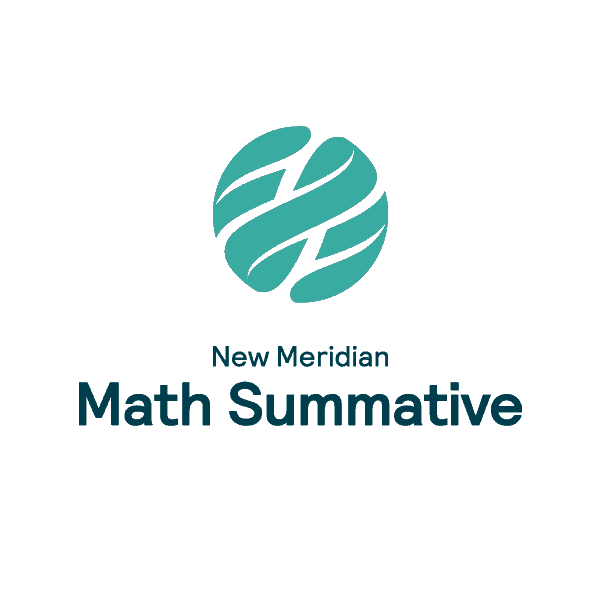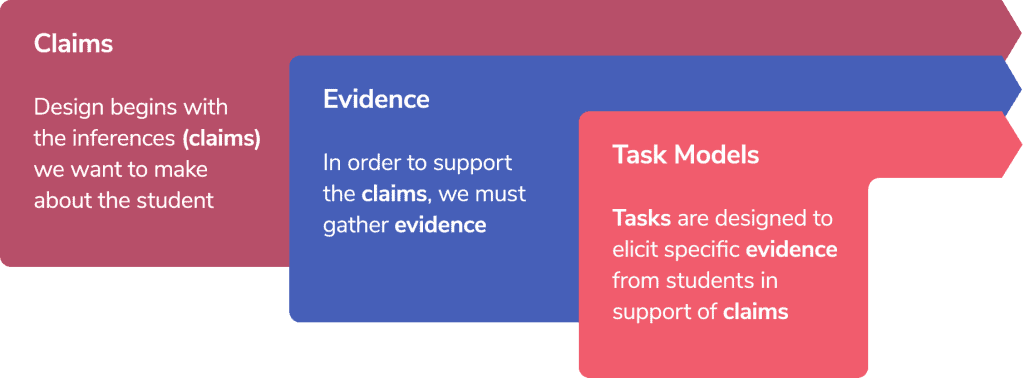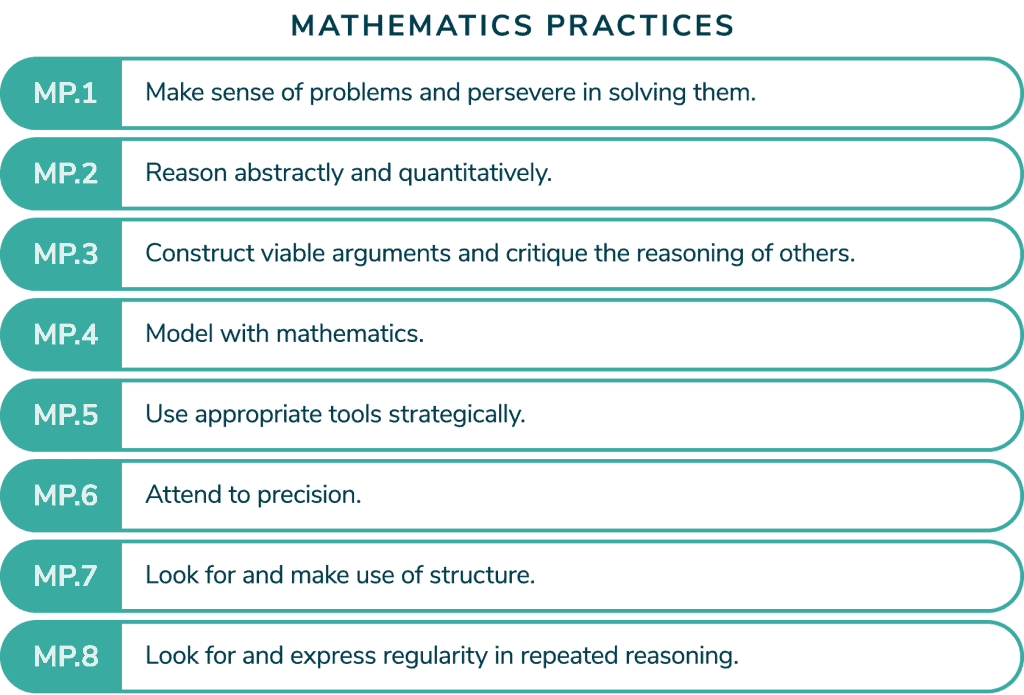Mathematical Practices
New Meridian’s rich, standards-aligned mathematics assessment content demonstrates the kinds of skills students should be developing in class, helping states strengthen instruction, deepen student engagement, and ensure all schools are focusing on the skills that matter for student success.

To succeed in today’s increasingly complex, technical world, students must be able to use mathematical concepts and procedures to model, evaluate, and solve real-world problems.
New Meridian’s summative mathematics assessments focus on these critical thinking and quantitative reasoning skills by having students apply their conceptual knowledge using appropriate tools and procedures to model and solve real-world problems.
Focusing on mathematics skills and concepts critical to success
The mathematics assessments focus on applying skills and concepts, understanding multi-step problems that require abstract reasoning and modeling real-world problems, precision, perseverance, and strategic use of tools. The assessment questions are designed to measure a combination of conceptual understanding, applications, skills, and procedures.
Referred by industry experts
New Meridian assessments and assessment questions are viewed by many experts in the field as well-designed, high-quality assessments. They have been described as next-generation tests that use innovative approaches and item types to measure states’ current content standards. The mathematics assessments provide comprehensive coverage of key mathematical content, and studies of the reliability and validity of the assessments have been positive. The psychometric procedures used to produce scores are technically sound and the tests provide comparable data across districts and schools.
Based on an Evidence-Centered
Design Approach
New Meridian’s assessment development process is grounded in the principles of evidence-centered design (ECD; Mislevy, Almond & Lukas, 2003). ECD is a deliberate and systematic approach to assessment development which helps to establish the validity of the assessments, increase the comparability of year-to-year results, and increase efficiencies in test development, delivery, and reporting.
When following an ECD approach to assessment development, the first step in designing the assessment is to develop claims that are derived from the standards being assessed. These claims are the inferences that a state would like to make about their students. The second step is to define the evidence needed to support the established claims. The evidence is described in the form of evidence statements that are derived from the standards being assessed and directly aligned to a claim. The third step is to create task models aligned to the evidence statements that are in support of the claims that guide production of the tasks that are designed to elicit the evidence from students. The figure below shows the major steps in New Meridian’s approach to assessment design and development.

The assessment development process is fully compliant with The Standards for Educational and Psychological Testing (AERA, APA & NCME, 2014) and the Council of Chief State School Officers’ (CCSSO) Criteria for Procuring and Evaluating High-Quality Assessments (2020). Each assessment question undergoes rigorous content, bias, sensitivity, and accessibility reviews, followed by large-scale field testing and data review by New Meridian staff and state educator committees prior to operational use.

Mathematics Content Areas
The content areas and mathematical practices that can be measured with New Meridian’s assessments are aligned with many states’ academic standards, so most states will be able to select and use New Meridian’s existing test forms or individual assessment questions for their end-of-year summative assessments. In addition to the content areas described below, New Meridian can custom develop items to address other aspects of mathematics curricula, as well as items and test forms suited for interim assessments.
Grades 3–8
For elementary and middle school, New Meridian mathematics assessments cover five broad areas of mathematical content that typically comprise the core of states’ mathematics content standards in Grades 3–8. Most states, districts, and schools require mathematics assessments in these content areas that are viewed as the foundational knowledge and skills for the subject:
- Number
- Operations and Algebraic Thinking
- Measurement
- Geometry
- Data, Statistics, and Probability
High School
For high school, the New Meridian mathematics assessments are designed to cover two academic tracks, including Integrated Mathematics. The mathematics content around the six mathematics courses typically offered in Grades 9–12:
- Algebra I
- Geometry
- Algebra II
- Integrated Mathematics I
- Integrated Mathematics II
- Integrated Mathematics III
Mathematical Practices for Grades 3-8 and High School
In connection with the mathematics content, New Meridian’s assessments are designed to measure students’ achievement of mathematical practices (MP). The mathematical practices describe a variety of expertise that students should develop in mathematics along with content knowledge. The mathematical practices addressed across all grades are shown in the figure below.

Cognitive Complexity
As each New Meridian assessment question is developed and reviewed, its cognitive complexity, or the demand it makes on students’ thinking, is evaluated. New Meridian’s mathematics questions are classified by three levels of complexity—Low, Medium, and High—based on the complexity of the content, mathematical practices required to complete the item, and the processing complexity, including the stimulus material, response mode, and processing demands.
These classifications provide a systematic, replicable method of determining the cognitive complexity of each assessment question, supporting measurement precision across the achievement scale.
Assessment Tasks and Question Types
New Meridian’s bank of assessment questions include a wide variety of both short and extended questions, or tasks, that provide broad coverage of the mathematics content areas and a range of cognitive complexity. The mathematics tasks include three general types of questions: selected-response, constructed-response, and technology-enhanced.

Accessibility and Accommodations Features
New Meridian’s assessments are designed to be accessible and equitable for all students, including students with disabilities, English Learners, and English Learners with disabilities. Following the principles of universal design, accessibility is considered through all stages of the test development process, from initial item development through test administration. The assessments are equipped with a wide range of accessibility features that are available to all students (e.g., magnification, answer elimination, highlighter tool) and optional features that may be provided to any students (e.g., color contrast, text-to-speech). The assessments also include a range of accommodations for both students with disabilities (e.g., Braille, large print) and English Learners (e.g., written directions in a variety of languages, word-to-word dictionary, human reader).
New Meridian Mathematics Assessment Quality
Over the past five years, multiple independent reviews evaluated the state summative assessment options available for Grades 3–8 and high school. Several studies show that the New Meridian assessments (referred to as PARCC in these studies) are high-quality, comparable to NAEP, accessible, predictive of college- and career-readiness, and endorsed by the country’s top educators.
Stay Current with New Meridian
Subscribe to The Prime, our monthly newsletter that explores how states, districts and educators use quality assessments and data-informed instruction to help students improve every day.
FOLLOW NEW MERIDIAN